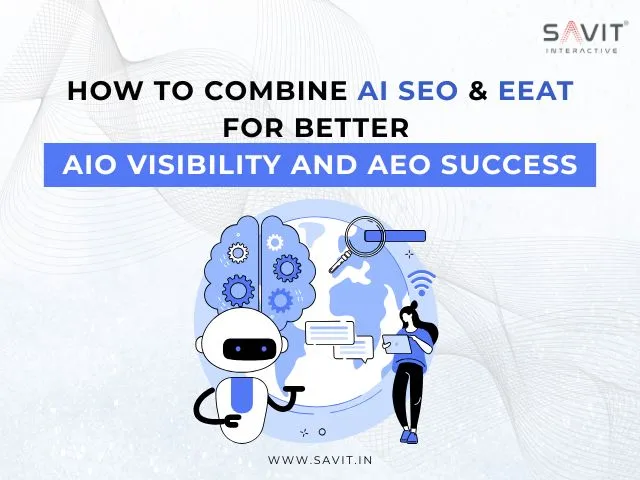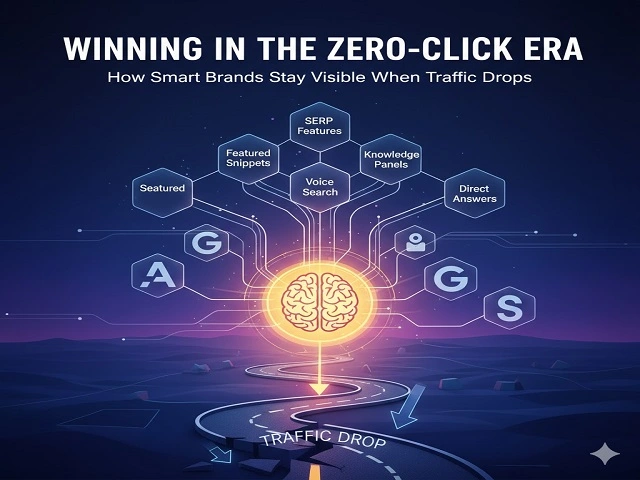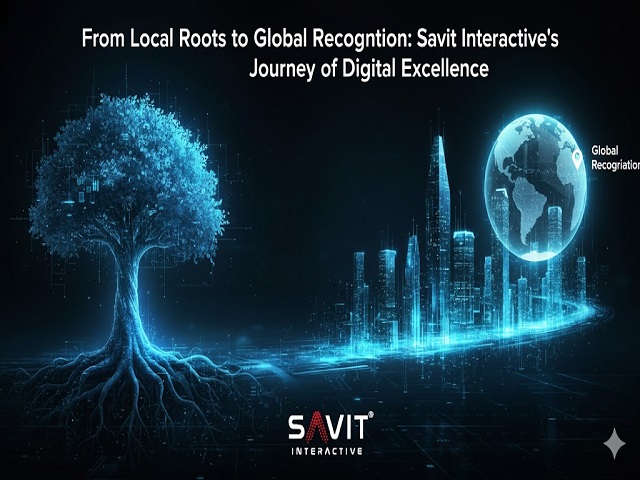Search is evolving rapidly. With the rollout of AI Overviews (AIO) in Google Search, users now receive summarized answers directly on the results page, often without needing to click through. This new format is changing how visibility works in search.
To appear in these AI-generated answers and continue earning traffic, you need a strategy that combines:
- AI SEO to scale and automate key SEO tasks
- AEO (Answer Engine Optimization) to structure content for AI visibility
- EEAT (Experience, Expertise, Authoritativeness, and Trustworthiness) to establish credibility and be seen as a reliable source
This guide explains how these elements work together and what actions you can take now to improve visibility in AI-powered search.
What is AIO (AI Overviews)?
AI Overviews are enhanced answer snapshots at the top of Google’s search results. They respond to complex queries by combining and citing information from various trusted websites.
They are especially common for:
- Informational queries, such as “What is Magna White Marble?”
- Comparison searches
- How-to guides or instructional content
Why AIO Matters:
- Top placement: Appears above organic listings, making it the new “Position Zero”
- Citation-based exposure: Only sources aligned with Google’s quality criteria, including EEAT, get cited
- Reduced organic clicks: Users may find what they need directly in AIO, bypassing traditional listings
If your content is not AIO ready, it may get buried even if it ranks well organically.
What is AEO (Answer Engine Optimization)?
Answer Engine Optimization (AEO) involves optimizing website content so it can be understood, extracted, and displayed by answer engines like Google AIO, Bing Copilot, and Perplexity.
Rather than just ranking in search results, AEO positions you as the source behind the answer.
Key AEO Strategies:
- Use direct, conversational question and answer formats
- Incorporate structured data such as FAQ and HowTo schema
- Focus on clarity, accuracy, and concise explanations
- Match the tone and style of AI-generated answers
Example:
If a user searches “What is Magna White Marble?” Google’s AI Overview might display:
“Magna White Marble is a premium white marble with soft grey veining, often used in upscale interior spaces.”
If your product page or blog includes this exact information, clearly structured and supported by expert input, your site may be cited in the AIO.
What is EEAT and Why It Matters?
EEAT stands for:
- Experience: First-hand use or real-world insight
- Expertise: Subject-matter knowledge or qualifications
- Authoritativeness: Industry reputation or recognition
- Trustworthiness: Factual accuracy and transparency
Originally part of Google’s Search Quality Evaluator Guidelines, EEAT is now central to which websites get cited in AI Overviews.
EEAT Signals to Prioritize:
- Author bios with credentials
- Citations from data sources and case studies
- Transparent company information and contact pages
- Regularly updated, fact-checked content
Without strong EEAT, your chances of being selected as a source in AIO or ranking well via AEO decrease significantly.
What is AI SEO?
AI SEO optimization uses AI-powered tools and platforms to automate and enhance your SEO workflow. It helps you uncover opportunities, streamline content creation, and monitor performance more efficiently.
Common Uses:
- Keyword research and clustering
- Competitor analysis
- Content brief generation
- Internal linking recommendations
- Meta tag optimization
AI SEO does not replace human strategists. Instead, it enables them to move faster, smarter, and more strategically.
Why AI SEO Alone is Not Enough
While AI SEO improves speed and productivity, it falls short in areas that require depth, originality, and human judgment.
Limitations:
- Lacks personal experience, which is important for EEAT
- May generate generic or repetitive phrasing
- Can produce content without strategic context
- May fail to meet trust signals if not carefully reviewed
AI SEO is a powerful ally, but not a standalone strategy, especially when aiming to earn citations in AIO or optimize for AEO.
How AI SEO Supports EEAT and AEO
When used effectively, AI SEO can help strengthen your EEAT and AEO efforts.
Smarter Topic Research:
- Discover intent-based queries your audience is asking
- Use AI clustering tools to group keywords by topic
- Identify gaps where competitors are being cited in AIO
Content Structuring for AEO:
- Create clear headings with questions such as “What is,” “How to,” or “Why”
- Include summaries early in your content for quick AI extraction
- Use schema such as FAQ and HowTo to help search engines understand structure
Faster Technical SEO:
- Use AI audits to fix crawl errors, page speed issues, and mobile usability
- Improve Core Web Vitals and structured markup
- Ensure your site is both human and machine-readable
AI-Enhanced Competitive Analysis:
- Identify which sites are consistently cited in AIO
- Benchmark your EEAT signals against competitors
- Find backlink or brand gap opportunities to build authority
AI-Assisted Content Creation:
- Use AI for first drafts, outlines, and meta descriptions
- Add human insights, case studies, and expert commentary
- Finalize with editorial oversight to meet EEAT standards
Best Practices to Combine AI SEO, AEO, and EEAT
Here is how to bring everything together into one unified strategy:
- Optimize content for AI Overviews by starting with a clear, concise summary of the topic
- Use questions as headings throughout the page
- Ensure each section answers a specific query directly
- Implement AEO tactics such as schema markup, FAQs, and HowTo guides
- Focus on solving real user problems rather than simply targeting keywords
- Build and maintain EEAT with author bios, company credentials, case studies, and fact-checked updates
- Use AI responsibly, allowing for human editing and review for tone, accuracy, and depth
When to Work with an AI SEO and AEO Agency
If your team lacks in-house expertise or bandwidth, partnering with a specialized agency can accelerate success.
An experienced agency offers:
- AI tools with expert oversight
- A deep understanding of AEO structuring
- EEAT-compliant content frameworks
- Real-time monitoring of AIO citations and performance
Agencies also stay updated with rapid shifts in how Google presents AI Overviews, ensuring your strategy adapts quickly.
Conclusion
The search landscape has changed. To thrive in an era dominated by AI Overviews, your SEO strategy must evolve beyond rankings and focus on visibility within AI-powered answers.
This means combining:
- AI SEO for scalable, efficient workflows
- Answer Engine Optimization (AEO) to structure content that AI can extract and present
- EEAT to ensure your content is trusted, cited, and visible at the top
Businesses that blend these strategies will not only survive but lead in the age of AI-first search.
Frequently Asked Questions
- What is the difference between AIO and AEO?
AIO refers to AI Overviews, Google’s summaries that appear above organic results. AEO is the process of structuring your content so it can be featured in those summaries.
- How does EEAT affect visibility in AI Overviews?
Google’s AI Overviews cite only trusted, authoritative content. If your content does not meet EEAT standards, it is unlikely to be used.
- Can AI-generated content rank in AIO?
Yes, but only if it is fact-checked, structured properly, and aligned with EEAT. Purely automated content without human input often lacks the required credibility.
- Is it worth hiring an agency for AIO and AEO?
Yes. An agency with AI SEO, AEO, and EEAT expertise can implement strategies faster, avoid costly mistakes, and ensure your content is optimized for modern search.



